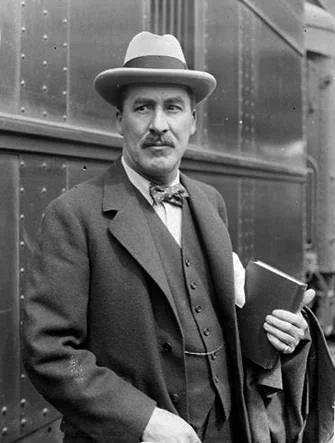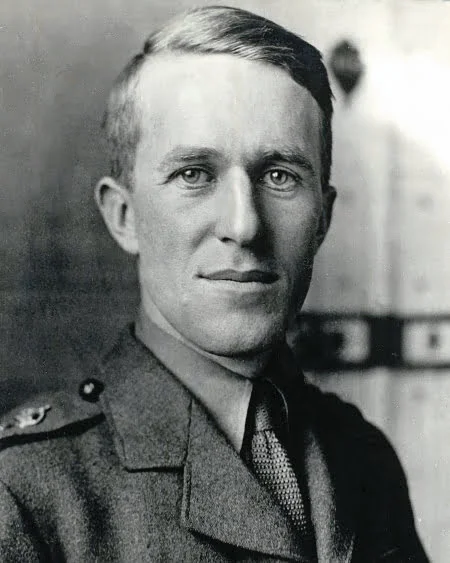Real Celebrities Never Die!
OR
Search For Past Celebrities Whose Birthday You Share

source: wikipedia.org
Howard Carter
Birthday:
09 May, 1874
Date of Death:
02 Mar, 1939
Cause of death:
Hodgkin’s disease
Nationality:
British
Famous As:
Egyptologist
Age at the time of death:
64
Early Life and Artistic Beginnings
Howard Carter, a renowned British archaeologist and Egyptologist, gained widespread recognition for his momentous discovery of the tomb belonging to the ancient Egyptian pharaoh Tutankhamun in 1922. Born in Kensington, London on May 9, 1874, he was the youngest of eleven siblings. Samuel John Carter, his father, who worked as a painter and illustrator, actively nurtured his son’s artistic abilities.
Fascination with Egyptology
During his teenage years, Carter’s fascination with Egyptology took root after he had the opportunity to view the impressive collection of Egyptian antiquities owned by Lady Amherst, a wealthy family friend, at Didlington Hall in Norfolk. Inspired by this encounter, Lady Amherst arranged for him to join the Egypt Exploration Fund in 1891, marking the beginning of his career as an archaeological artist. He meticulously depicted the wall reliefs and inscriptions found within the temple of Hatshepsut in Thebes.
Inspector of Monuments for Upper Egypt
In 1899, Howard Carter assumed the position of Inspector of Monuments for Upper Egypt under the Egyptian Antiquities Service. In this role, he oversaw various excavations and restoration projects in the Theban region, predominantly in the Valley of the Kings. It was here that he made significant discoveries, unearthing the tombs of Thutmose IV and Hatshepsut. Throughout his tenure, he encountered challenges while trying to safeguard these ancient sites from looters and tourists, culminating in a violent altercation that led to his resignation in 1905.
Collaboration with Lord Carnarvon
After becoming a private archaeologist, Howard Carter began working for wealthy individuals who financed his explorations. In 1907, he crossed paths with Lord Carnarvon, an English nobleman with a deep fascination for ancient Egypt. Intrigued by the little-known pharaoh Tutankhamun of the 18th dynasty, Carnarvon hired Carter to embark on a quest to locate his tomb. For years, Carter tirelessly searched the Valley of the Kings, but his efforts yielded no signs of the elusive tomb. Growing tired and financially drained, Carnarvon contemplated giving up.
Discovery of Tutankhamun’s Tomb
However, Carter managed to persuade him to continue for one more season. And on November 4, 1922, Carter made an astonishing breakthrough. He stumbled upon a concealed staircase that led to a sealed door adorned with Tutankhamun’s cartouche. Without wasting any time, he sent a telegram to Carnarvon, who arrived in Egypt two weeks later. Together, on November 26, they opened the door and gazed into the tomb, which overflowed with an abundance of treasures and artifacts.
Howard Carter's Quote's
Preservation and Documentation of the Tomb’s Treasures
Over the following ten years, Carter dedicated himself to meticulously documenting and preserving the contents of the tomb. Among the remarkable finds were the iconic gold mask, the sarcophagus, chariots, jewelry, and the mummified remains of Tutankhamun. He published his findings in a series of books, titled The Tomb of Tut-ankh-Amen, with the help of his assistant, Arthur Mace.
Carter died in 1939 at the age of 64.
Name:
Howard Carter
Popular Name:
Howard Carter
Gender:
Male
Cause of Death:
Hodgkin’s disease
Spouse:
Place of Birth:
Kensington, England
Place of Death:
Kensington, London, England
Occupation / Profession:
Personality Type
Entrepreneur: Howard Carter was a loner who preferred to be out in the world doing things rather than talking about meaningless topics.
He didn’t believe in King Tutankhumen’s curse.
He discovered the tombs of Queen Hatshepsut and Thutmose IV.
Howard Carter was the son of famous illustrator Samuel John Carter who drew and painted animals for the Illustrated London News.
Howard Carter discovered King Tutankhamun’s tomb in 1922

